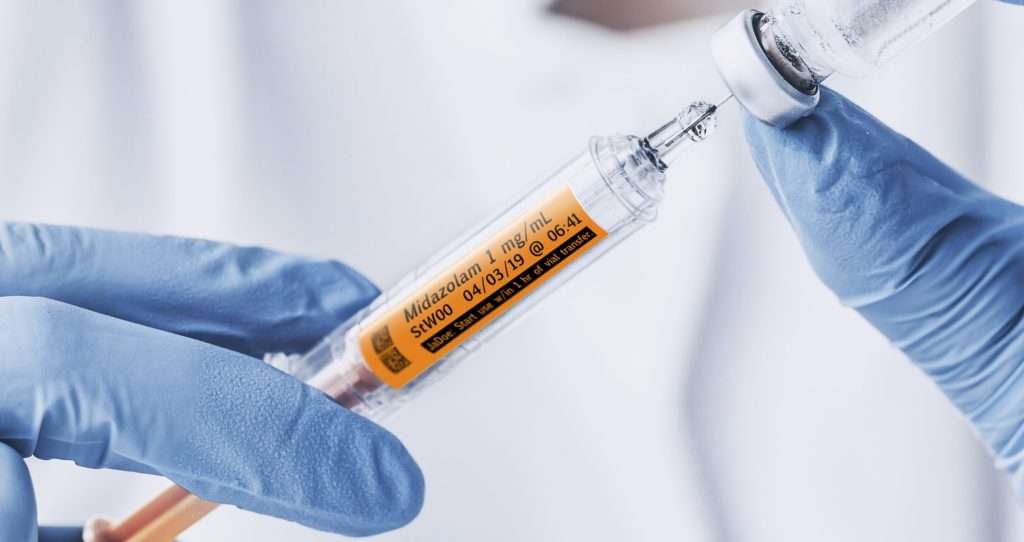For nursing leadership, maintaining IV tubing compliance remains one of the most consistent operational challenges—particularly in intensive care settings where high-risk medications like propofol and lipid emulsions demand frequent line changes. Although national standards clearly define tubing change intervals, consistent compliance is difficult due to manual labeling processes, inconsistent documentation, and generational gaps in comfort with handwriting.
Today, leading institutions like IU Health and WellStar are demonstrating that a simple, well-executed technological intervention—Vigilant’s Verify platform—can dramatically improve outcomes.
The Compliance Gap: A Known Risk
Despite ongoing education and CLABSI prevention initiatives, non-compliance with IV tubing labeling continues to contribute to avoidable infections. Daily audits at IU Health’s ICU revealed persistent labeling gaps—even after education efforts. National guidelines require tubing to be labeled with medication name, date/time hung, and date/time to be changed at both the IV pump and patient access point (INS, 2024), yet adherence was only around 75% prior to intervention【IU Health Poster†source】.
This is consistent with global literature: A 2022 study found that 31.5% of infusion errors were linked to incomplete or missing labels, with nearly half of all tubing remaining unlabeled in some ICUs. These oversights directly undermine patient safety and CLABSI prevention efforts.
Vigilant’s Verify Platform: A Practical Fix
Vigilant’s Verify platform automates the generation of IV tubing labels at the point of care. Using just two barcode scans (nurse badge and medication), the system produces clear, color-coded, and timestamped labels—eliminating handwriting entirely.
Benefits include:
- Standardization: Labels include medication, staff ID, start time, and tubing change time—all compliant with Joint Commission and INS standards.
- Customization: Short-dwell infusions like propofol are automatically tagged with reduced change intervals.
- Speed: Most units achieve full implementation in under an hour—with minimal training.
Real-World Results: IU Health & WellStar
At IU Health, implementation of label printers in adult ICUs led to a jump in compliance from 75% to over 95%, while CLABSI rates dropped from 9.52 per 1,000 patient days to zero following deployment【IU Health Poster†source】. Nurses overwhelmingly supported the change—82% said the printers improved workflow and efficiency.
WellStar Health System reported even more striking results: 639 consecutive days without a single CLABSI after integrating the Vigilant system into their ICU’s infection prevention strategy【WellStar Publication†source】. They credit success not just to the technology, but to staff engagement enabled by automation that nurses trusted and found easy to use.
These results confirm broader findings: hospitals using Verify typically report:
- 95%+ labeling compliance
- 50%+ reductions in labeling-related documentation deviations
- Significant drops in CLABSI rates, especially related to lipid and propofol infusions
Why Automation Works for Modern Nursing
Today’s nursing workforce is evolving. A 2022 Nurse Educator survey found that 78% of Gen Z nurses feel uncomfortable with handwritten documentation, compared to only 12% of Baby Boomers. In a high-stakes environment where tubing must be labeled correctly every time, the risk of human error increases with manual processes.
Verify’s automation resolves this by removing handwriting altogether. Each label is generated instantly, with correct timing, dosage, and compliance data—allowing nurses to focus on care, not calculations.
A Simple, Scalable Step Toward Safer Care
The guidelines to prevent CLABSIs are not in question. What hospitals need is a practical, scalable method for executing them consistently. Vigilant’s Verify platform offers exactly that: an intuitive, low-effort solution that embeds safety into every shift.
For hospitals still relying on handwritten tubing labels, the evidence is clear: it’s time to modernize. Your nurses will thank you. Your infection control team will thank you. And most importantly, so will your patients.
Citations
- IU Health Poster (2025). Utilizing Technology: Increasing IV Tubing Labeling Compliance to Prevent CLABSI.
- Wendy Elliott et al. (2024). 639 Days CLABSI-Free at WellStar Using Vigilant, American Journal of Medical Quality, 39(4S).
- Morrison S. et al. (2023). Impact of Day-of-the-Week IV Connector Labels, American Journal of Infection Control. Link
- Nunes, G., Campos, F., & Silva, R. (2022). Intravenous Therapy Errors and Labeling Compliance in ICUs, Int J Environ Res Public Health. Link
- Nurse Educator Journal (2022). Generational Trends in Documentation Confidence Among Nursing Staff.

